The Texas Student Success Program Inventory
How Public Undergraduate Institutions Are Supporting Student Success Across the State of Texas
Executive Summary
The Texas Student Success Program Inventory (SSPI), available at https://www.highered.texas.gov/sspi, is an online database of information related to student success programs at public colleges and universities, commissioned by the Texas Higher Education Coordinating Board (THECB). Consistent with nearly every other state, prior to the creation of the SSPI, there was no organized source of information about student success programming in Texas. By creating a user-friendly tool for publicly sharing information, the SSPI is intended to push forward collaboration and innovation in student success programming and help the state accomplish the goals laid out in its 2022-2030 strategic plan, Building a Talent Strong Texas.
Public undergraduate-serving institutions were invited to nominate their most impactful and innovative student success programs for inclusion within the inventory. Following this nomination process, we asked program staff to provide detailed information about each program, including eligibility criteria, funding sources, and program outcomes. The SSPI currently houses information from 244 programs across 74 institutions in Texas.
Our review of the student success program data resulted in the following observations:
- More programs concentrate on retention and persistence, academic performance, and student belonging and well-being than on objectives such as credential attainment, affordability, and post-completion goals.
- The majority of programs in the inventory target low-income students, first-generation students, and students of color.
- Programming centered on mentorship and academic goal setting and planning is the most prevalent in the inventory.
- Programs in the inventory often depend on one funder, typically a funder within the institution.
- Roughly two-thirds of respondents indicated that data on student outcomes had already been collected or were being collected pertaining to their program.
Introduction
In early 2022, the Texas Higher Education Coordinating Board released its newest strategic plan, Building a Talent Strong Texas, which outlined the postsecondary goals of the state through 2030. In short, the plan contains three main goals: 1) increase postsecondary attainment among working-age Texans, 2) ensure that the credentials offered by Texas colleges are credentials of value that lead to well-paying jobs, and 3) foster and produce research that is innovative and drives economic development in the state. These goals provide direction to colleges and universities as they continue to grapple with the effects of the COVID-19 pandemic on higher education and the resulting declines in college enrollment, particularly among community and state colleges, which experienced an enrollment decline of nearly 12 percent from fall 2019 to fall 2022.[1] Underrepresented minority student groups have been particularly affected by the pandemic, with research showing that Black and Latino/a students are more likely than white students to cancel their plans to attend college or switch to different degree or certificate programs in response to changes wrought by the pandemic, such as increased caretaking responsibilities or decreases to their household income.[2] In order to meet the goals of Building a Talent Strong Texas and address inequities exacerbated by the pandemic, it is critical that Texas colleges and universities offer programming that provides the skills and support students need to flourish and succeed at their institutions.
Postsecondary institutions across Texas have developed a variety of programs to support their undergraduate students, aimed at serving the needs of the general student body as well as specific subpopulations. Although some programs have attained prominence and a handful have been the subject of formal evaluation, there had been no organized source of information on what programs are offered, to whom they are offered, their features and costs, or their record of success. The Texas Higher Education Coordinating Board (THECB) contracted Ithaka S+R to gather information about student success programs and initiatives and organize the information in a flexible, user-friendly system for stakeholders to use when developing, enhancing, or scaling their own programs to help build on statewide efforts to improve student success.
To assist in the creation of the Texas Student Success Program Inventory (TX SSPI) hub on the OERTX Repository, we subcontracted with the Institute for the Study of Knowledge Management in Education (ISKME). Specifically, ISKME provided support and guidance on hub design, curation, administration, and roll-out strategies. Researchers at Texas A&M University- Commerce affiliated with the Texas Education Policy Institute (TEPI), as well as numerous members of THECB, including the Digital Learning team, were also critical thought partners in the development of the SSPI.
In this report, we briefly describe the functions of the Student Success Program Inventory and its intended users, as well as the process we underwent to develop the inclusion criteria for the inventory. Next, we discuss the data collection process and how we surveyed Texas public colleges and universities for student success program information. We then provide descriptive statistics and analyses to illustrate the state of student success programming in Texas. The report closes with suggestions for growth as the state continues its mission to improve equity and maximize student success.
Student Success Program Inventory
The Texas Student Success Program Inventory is an online tool which operates as a hub for information about success programs and initiatives at public colleges and universities across Texas on the OERTX Repository. Visit the following URL to access the SSPI: https://www.highered.texas.gov/sspi.
Each program in the SSPI has a dedicated page that includes a short description of the program, key program details (e.g., the approximate number of participants in the 2021-2022 academic year and program eligibility criteria), preliminary evaluation data as available, and the contact information for program leadership. Visitors to the site can also use the web page or the documents, such as flyers or brochures, associated with each resource page to obtain additional information about the program.
The student success programs included in the inventory are organized into collections, or groups of programs with shared themes, based on practice areas, target population, core objectives, institution, and alignment with Building a Talent Strong Texas goals. Programs also have keyword tags that reflect their delivery format, institutional size, institutional sector, awards earned, funding source, practice area, target population, core objectives, and institution. These tags enable users to further filter programs. In addition to information about individual success programs, the inventory currently includes one collection of evaluation reports about the programs featured in the inventory. In the near future, two additional collections will be added; one collection will contain the report and research briefs written by the TEPI researchers affiliated with this project, and the other collection will house this report by Ithaka S+R.
The SSPI is intended to be easily navigable by the multiple stakeholders who are invested in the work of student success. The inventory will serve as a resource for student success professionals at postsecondary institutions in the state, providing a space for program staff to network and learn from other programs. In addition, the TX SSPI can be leveraged by those in student-facing roles to help students identify programming that may be beneficial to them. By organizing information about student success programs, the inventory also provides the THECB and others better opportunity to study the availability and outcomes of student success programs across the state.
Student Success: Definition and Scope
Student success is a core concept in higher education, yet its definition can vary widely. In order to develop clear eligibility criteria for the Student Success Program Inventory, we first had to consult previous research to define student success for the purposes of this project and identify practices and programming associated with student success.
We started by reviewing how student success is defined in academic research, materials from education nonprofits and think tanks, and university websites. We noted the specific ways these resources defined and measured student success as well as key themes across the literature. In doing so, we sought to ensure that our conceptualization of student success would capture the majority of programming that Texas colleges and universities classify as related to student success.
Student success definitions generally focus on at least one of five key areas: (1) persistence/retention, (2) credential attainment, (3) academic achievement, (4) student advancement post-graduation, and (5) students’ holistic development.[3] Understandably, most definitions of student success emphasize improving academic performance, raising graduation rates, and reducing time-to-degree. Yet, institutions are also highly interested in improving students’ overall experience on their campuses and setting them up for success post-graduation.[4],[5] This requires that colleges and universities provide opportunities for students to develop their soft skills, network and build community, and receive the support and resources they need to thrive personally as well as academically. For the purposes of the SSPI, we determined that student success programming should prioritize at least one of the following core objectives: retention/persistence, credential attainment/graduation, academic performance (i.e., student grades or learning), post-completion goals (e.g., obtaining employment, continuing education), social development and well-being (e.g., belonging, mental health), or making credential attainment affordable (including in ways beyond providing students with scholarships or other typical state and federal financial aid).
After defining the core objectives, we evaluated the types of programs and practices associated with student success at two- and four-year institutions to better understand the variety of programs that could be featured in the SSPI. We drew heavily from a series of reports by the Center for Community College Student Engagement (CCCSE) which identified 13 “promising” or high-impact practices at community colleges that have emerging evidence of success across an array of metrics, such as course completion and graduation rates.[6] The data supporting these practices come from student course-level data; surveys and focus groups with students, faculty members, colleges; and prior research. The 13 practices cover various stages of students’ academic journeys, in recognition that students’ needs often shift as they progress from new, incoming students to upperclassmen. These practices include orientation, academic goal setting and planning, student success courses, and supplemental instruction.
Prior research also highlights the importance of building relationships on campus, through practices such as mentorship or learning communities. A 2018 meta-analysis of student success research determined that student-faculty mentoring relationships have a positive and significant effect on both retention and graduation rates for undergraduate students.[7] Learning communities, which generally involve cohorts of students taking a series of linked courses together to explore a particular topic or question, are also endorsed by the American Association of Colleges and Universities as a “high-impact practice,” a marker they grant to programs which have been proven to provide significant benefits to participating students.[8] Learning communities are also frequently tied to campus housing so that students may reside on campus alongside peers with whom they share common interests or experiences, a practice which has been shown to be associated with a greater sense of community and belonging for these students in their residence halls.[9]
Having strong social ties is particularly important for students of color, who can feel marginalized on campuses with few minority students and faculty members of color.[10] One study examined how the number and type of interactions Latino/a students have with faculty and academic counselors is associated with students’ GPA and retention at a community college.[11] The study found that discussing career-related issues with instructors and counselors was significantly and positively related to students’ GPA. Similarly, a review of the literature on student success emphasizes the role of belonging, culturally responsive curriculum, and mentorship from faculty of color to improve retention and graduation rates among students of color, advocating for programs and initiatives which consider individual- and institutional-level barriers to student success.[12]
Experiential learning outside of the classroom can also positively impact students. Undergraduate students who gained research experience in their first year of college have been shown to have significantly higher satisfaction with their university in the first year and a higher GPA in their fourth year than students who did not participate in undergraduate research as first-year students.[13] Internships are another impactful practice for students,[14] and colleges and universities can help students to secure these opportunities by providing information about their availability, facilitating social networks for students to build connections in their field of interest, and career planning to help students understand how to use their internship to their advantage in the labor market.
Yet, students must also be able to meet their basic needs, and the needs of those who depend on them, in order to take advantage of opportunities like undergraduate research or internships, and recent figures show that many college students face significant financial hardship. A 2019 survey by the Hope Center found that approximately 48 percent of students at two-year institutions and 41 percent of students at four-year institutions in the US reported that they had been food insecure within the past 30 days.[15] This same report also found that 60 percent of students at two-year institutions and 48 percent of students at four-year institutions had faced housing insecurity, such as being unable to pay their rent or utilities. Moreover, approximately one-fifth of college students are parents, and student parents are more likely to be Black or Latino/a.[16] Recent figures from The Education Trust estimate that if a student parent works a minimum wage job, they would need to work an average of 54 hours a week for 50 weeks of the year to be able to cover the net price of their education and the cost of childcare expenses—an amount unfeasible for many students.[17]
An evaluation of a scholarship program for single parents pursuing an undergraduate degree found that participation was associated with higher achievement, greater progress toward degree completion, and degree completion, compared to student parents who did not participate.[18] However, the authors argue that the success of the program was a function of both its financial assistance to students as well as the academic and social support it provides, including tutoring, course planning, and peer networking. This reflects the findings of other research which call for a comprehensive approach to student success programming.[19]
Given the need for comprehensive programming, our analysis of the extant literature on student success also led us to broaden our definition to include some programming which is not student facing. Parents, families, faculty, and staff can play a crucial role in students’ college experiences. There is research that categorizes some programming aimed at these groups as student success programming. For example, parent and guardian orientation programming can help improve students’ potential for success in college by equipping their families with the information and guidance they need to best support their students.[20] Similarly, other research categorizes programming intended to improve the teaching effectiveness of faculty as student success programming since its goal is to improve students’ academic outcomes.[21] We therefore determined that programming which was not explicitly student-facing could still fit within the scope of the Student Success Program Inventory if the core objectives of the programs were ultimately aimed at student success.
Our review of the literature helped us to identify 16 high-impact or promising practices related to student success:
- Academic goal setting and planning
- Accelerated or fast-track developmental education
- Alert and intervention/proactive advising
- Alleviating financial strain
- Basic needs assessment and provision
- Career planning
- Cultural competence training for faculty and staff
- Diversifying faculty
- Experiential learning beyond the classroom (e.g., internships, community-based projects)
- Learning community
- Mentorship
- Orientation/onboarding
- Student success course/skill building
- Supplemental instruction
- Teaching effectiveness training for faculty and staff
- Tutoring
- We included these practices in our call for nominations to provide clear examples of student success programming. The SSPI also uses these practices as collections and keyword tags to help users quickly find relevant programs. This list, however, is not exhaustive, and institutions were allowed to nominate programs that do not utilize one of the specified practices.
Data Collection Process
Data were collected from institutions in two phases. Phase one began in May 2022. In this initial phase, we surveyed college presidents, provosts, and other high-level administrators to gather program nominations for inclusion in the SSPI. These administrators were identified by THECB and, when necessary, through a review of institutional websites and directories. In this survey, administrators were presented with the inventory scoping documents and asked to nominate and provide contact information for up to five programs at their institutions which they viewed as the most impactful or innovative.
Phase two of the information gathering process consisted of sending program staff identified in phase one a form to gather key details about the nominated programs. The form asked for a robust array of information about the program or initiative, including a program description, information about how many participants are served annually, program eligibility criteria, funding information, and any information related to program outcomes.
The forms were administered on a rolling basis to facilitate a more efficient data collection. Because of this, data collection, data vetting, and data follow-up occurred simultaneously. To vet the data, team members reviewed the responses from phase two, checking for missing or unclear information with a focus on information that would be shared in the inventory, as well as if the program fit within the scoping parameters developed at the onset of the project (Figure 1). If additional information or clarification was needed, and if it could not be found on the program’s website or through other linked resources, our team would email or call the program contact. If program staff were unresponsive to our attempts to follow up, our team tried to identify the information ourselves or contact additional program staff. In some cases, we left those data fields empty. For example, many programs did not provide a website URL or promotional material to be used as the program’s resource in the inventory. Most often, this was the case for programs without a dedicated webpage on their institution’s website. If program staff did not provide a resource after our team attempted to contact them, we listed the link of the department or office that oversees the program or linked to the institution’s homepage.
In reviewing the program information submitted, and through conversation with THECB, we determined that the parameters we had initially set for the inventory should be relaxed to ensure that the inventory was robust and reflected the wide array of student success programming and services at Texas colleges and universities. Many institutions submitted programs which were not targeted to a specific subpopulation, instead serving the general student body. However, these programs and initiatives still met much of the criteria outlined in our definition of student success, and we therefore felt that they should be included in the inventory as they provide essential services to students, their families, faculty, and staff. Institutional departments and campus offices, such as counseling offices, were also initially considered out of scope but were later ruled in scope given the services they offer and their core objectives. All program contacts were sent a link to their program’s page in the inventory to provide one final opportunity for revisions before the formal launch of the inventory in March 2023.
Key Insights[22]
The first iteration of the inventory captures a diverse set of public institutions and programs, featuring 74 of the 94 public institutions in Texas and 244 programs. When compared to the universe of Texas public institutions, those featured in the inventory, on average, have similar retention rates, percentage of students receiving Pell, and total fall enrollment. They also have comparable MSI and urbanicity designations. There is, however, a slightly larger share of four-year or above institutions in the inventory (60 percent) than in the greater population of Texas public institutions (52 percent).
Below we provide statistics for key characteristics of the programs included in the inventory sample (see Tables 1 and 2). A majority are from four-year institutions, and the greatest share of institutions are located in cities (see Table 1).[23] Almost half of the colleges and universities are classified as Minority Serving Institutions, or MSIs (see Table 1). On average, the institutions included in the inventory have a retention rate of just over 70 percent and sizeable underrepresented minority (URM) populations (see Table 2).[24] Though there are some slight differences across characteristics when moving from the institutional to the programmatic level, most of these differences are minor. Because of this and the nature of the inventory, the descriptive analysis below focuses on programs rather than institutions.
Table 1 – Percentages of Institutional and Programmatic Characteristics
| Institutional Characteristic | Percent of Institutions in Inventory (n=73-74) | Percent of Programs in Inventory (n=243-244) | |
| Institutional Sector | |||
| Public, 2-year | 40.5% | 33.6% | |
| Public, 4-year or above | 59.5% | 66.4% | |
| Minority-Serving Institution (MSI) | |||
| MSI | 43.8% | 47.7% | |
| Institutional Degree of Urbanization | |||
| City | 54.8% | 59.3% | |
| Suburb | 11.0% | 8.23% | |
| Town | 28.8% | 27.6% | |
| Rural | 5.48% | 4.94% | |
Table 2 – Averages of Institutional and Programmatic Characteristics
| Characteristic | Average at the Institutional Level (n=62-73) | Average at the Programmatic Level (n=208-243) |
| Revenue per FTE | $21,546 | $23,803 |
| Total FTE enrollment | 12,754 | 14,704 |
| Total fall enrollment | 13,027 | 14,620 |
| Retention rate* | 72.8% | 75.8% |
| Share of URM* | 53.8% | 52.2% |
| Percent Pell* | 33.6% | 33.3% |
*Note: This average was weighted based on IPEDS enrollment data.
Below we summarize the details of the student success programs currently hosted on the inventory as well as differences that arose across key institutional characteristics. These insights and descriptive statistics are based on self-reported survey results that were partially vetted by our team for clarity and completeness. It should be noted that the differences described below were identified as meaningful due to their size, not tests of statistical significance. As such, the insights provided here should be taken as a catalyst for further investigation and investment.
Goals
As described above, we identified six core objectives related to student success through our team’s desk research and in collaboration with the THECB: retention/persistence, credential attainment/graduation, academic performance (i.e. student grades or learning), social development and well-being, post-completion goals, and credential attainment affordability (with an emphasis on avenues that go beyond providing students with scholarships or other typical state and federal financial aid). Each form respondent was asked to select the core objectives addressed by the program they were describing. Figure 1 shows the percentage of programs by how many core objectives were associated with a program, and Figure 2 presents the number of programs associated with each core objective. When prompted, most respondents selected two to four objectives from this list, suggesting that many of the programs in the inventory provide more comprehensive support (Figure 1).
Figure 1 – Percentage of Programs by Number of Core Objectives, n=244
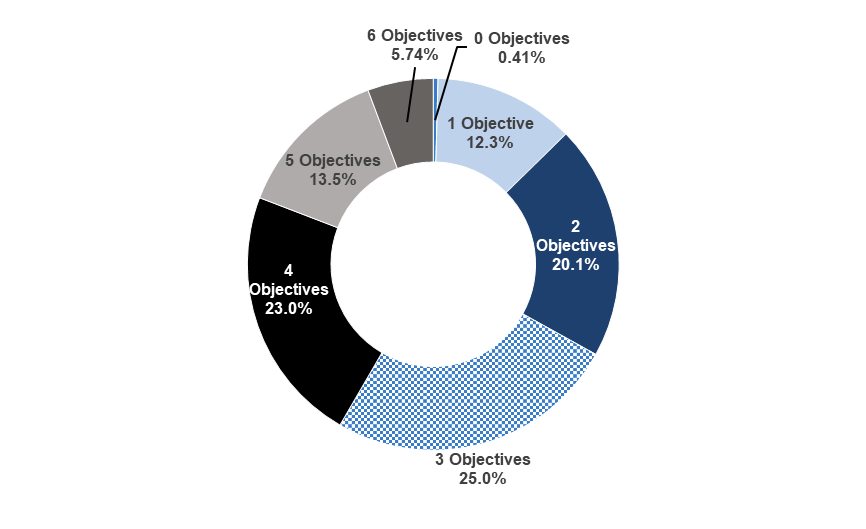
Though respondents often chose multiple core objectives, retention/persistence was selected most frequently—by 89 percent (n=217) of programs—highlighting its importance for public institutions in Texas (Figure 2). Fewer programs were associated with student post-completion goals and affordability, only 29 percent and 18 percent respectively, underscoring potential opportunities for the growth for the inventory (Figure 2). Figure 3 shows the percentage of programs that selected student post-completion goals and affordability disaggregated by institutional degree of urbanization, and Figure 4 shows these percentages disaggregated by sector. Programs facilitated by colleges and universities in rural areas were more likely to address post-completion goals compared to their suburban counterparts, with 42 percent (n=5) of programs located in rural locales identifying with the objective of post-completion versus 20 percent (n=4) of suburban programs (Figure 3). Similarly, programs at two-year institutions, MSIs, and institutions with lower net tuition on average were more likely to identify affordability as a core objective. Where 14 percent (n=23) of programs at four-year institutions selected affordability as a goal, about 25 percent (n=21) of programs at two-year institutions indicated that this was a core objective (Figure 4). It should be noted that respondents were allowed to select “Other” as an option when sharing a program’s core objectives; many of the responses written in the “Other” option were captured by other questions in the form, such as target population and practice areas.
Figure 2 – Number of Programs by Core Objectives, n=244
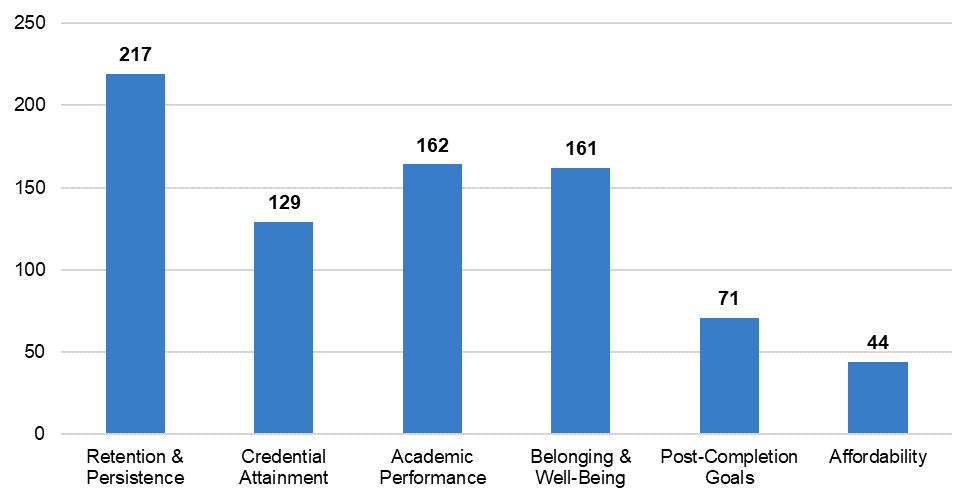
Figure 3 – Percentage of Programs with Post-Completion Goals as Core Objective by Institutional Degree of Urbanization, n=243
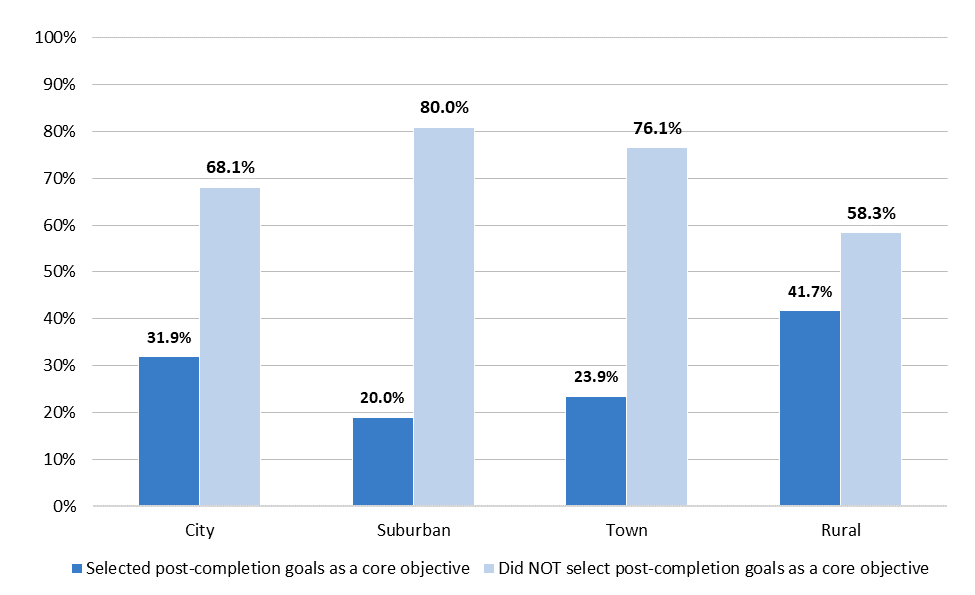
Figure 4 – Percentage of Programs with Affordability as Core Objective by Institutional Sector, n=244

Institutions of higher education nationwide worked to adequately adjust the supports in place for students following the onset of COVID-19, formally and informally expanding support programming for students and creating virtual options.[25] Because the impact of the pandemic continued to be felt at the time this survey was administered, we asked respondents to share if and how the goals of the programs they described in their response were related to COVID-19. Figure 5 presents responses to this question by percentage of programs. The majority of programs were not related to mitigating or addressing the impact of the COVID-19 pandemic (Figure 5). However, approximately one-third of programs were either started, expanded, or reduced due to the pandemic (Figure 5). This suggests that while some programs in the inventory were impacted by COVID-19, most represent priorities that are not solely based on the circumstances created by the onset of the pandemic.
Figure 5 – Percentage of Programs by Association with the COVID-19 Pandemic, n=238
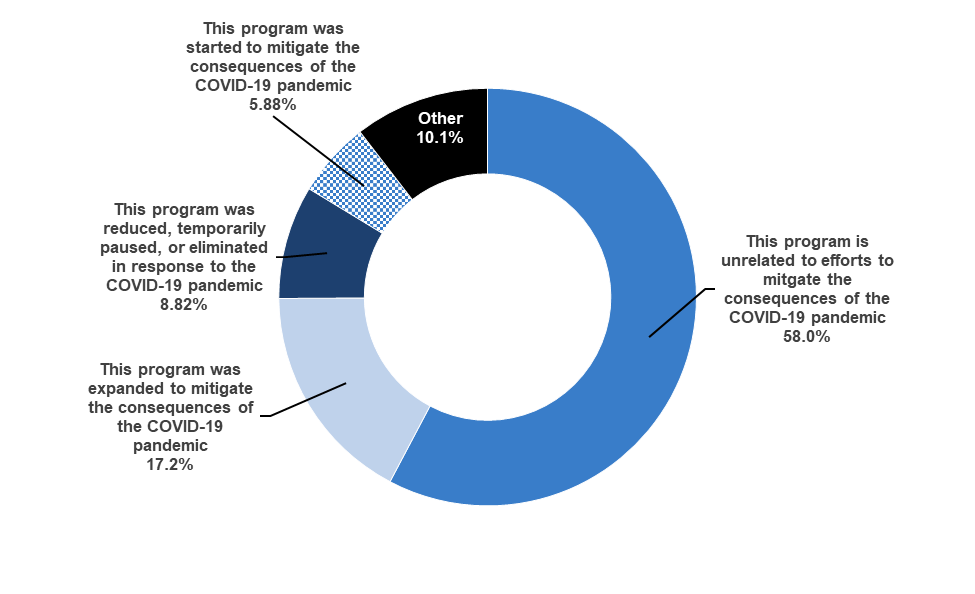
The programs hosted in the inventory reflect a variety of goals, with more programs focusing on retention/persistence, academic performance, and belonging and well-being. Comparatively, fewer programs were associated with credential attainment, affordability, and student post-completion goals. However, programs at rural and two-year institutions were more likely to address these goals when compared to their counterparts. Altogether, the programs in the inventory focus more on students’ experience while they are enrolled rather than students’ post-completion outcomes.
Participants Served
By collaborating with the THECB and reviewing a subset of student success programs offered in Texas, we identified a list of potential target populations for student success programs. Before asking respondents to share their program’s specific target group(s), we asked them to indicate whether the program they were describing was indeed targeted. Because we originally scoped the inventory to only include targeted programs, most programs are associated with a specific student population. However, some programs captured by the inventory are more general, serving the whole student body or multiple stakeholder groups (e.g. a specific student population, faculty/staff, and parents/guardians) (Figure 6). In a few cases, those who selected the general student body as the recipients of a program noted that, though programming was open to the general student body, the target audience was more specific. For instance, one participant wrote, “The program was developed to improve outcomes for minority students. It is currently open to all[,] but low-income minority students are heavily recruited for the summer bridge program.”
Programming for faculty/staff and parents/guardians specifically was less likely to appear in the inventory when compared to student programming (Figure 6). This underscores another potential area for development within the inventory, as faculty/staff and parents/guardians play key roles in ensuring student success.
Figure 6 – Number of Programs by Population Served, n=244
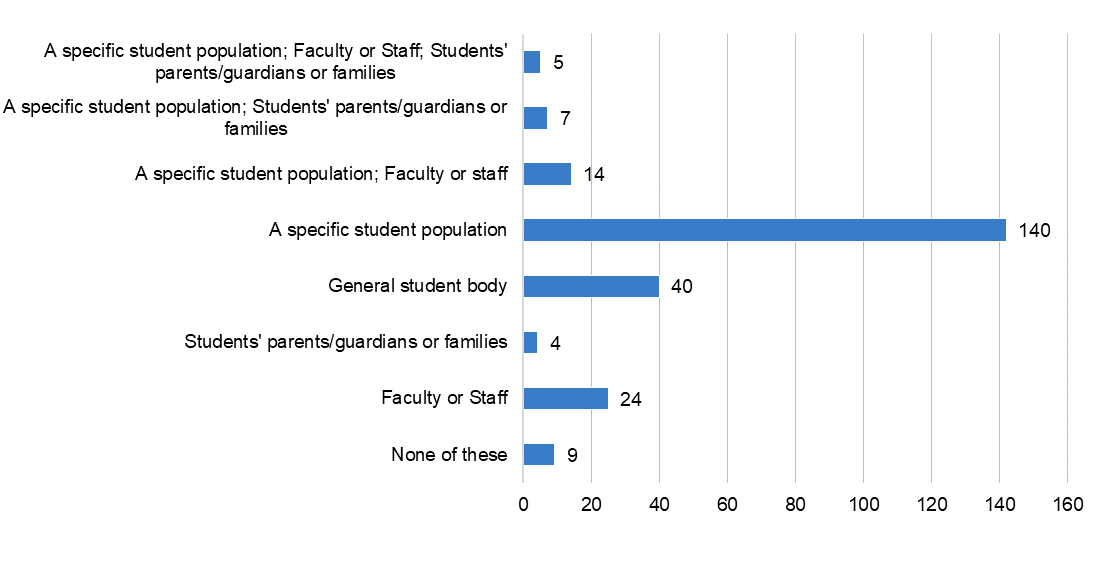
When asked about the target student populations, respondents, on average, selected approximately three subpopulations, with a minimum of one and a maximum of 22 student populations. The range of responses shows that while some respondents were precise in their definition of the program’s target audience, others were more inclusive. Figure 7 shows the number of programs by student population served. Approximately 22 percent (n=54) of programs selected low-income students as their target audience, and just under 20 percent (n=48) of programs selected first-generation students (Figure 7). Programs at urban and four-year institutions were the most likely to have first-generation students as a target population (see Figure 8 for degree of urbanization).
Figure 7 – Number of Programs by Student Population Served, n=244
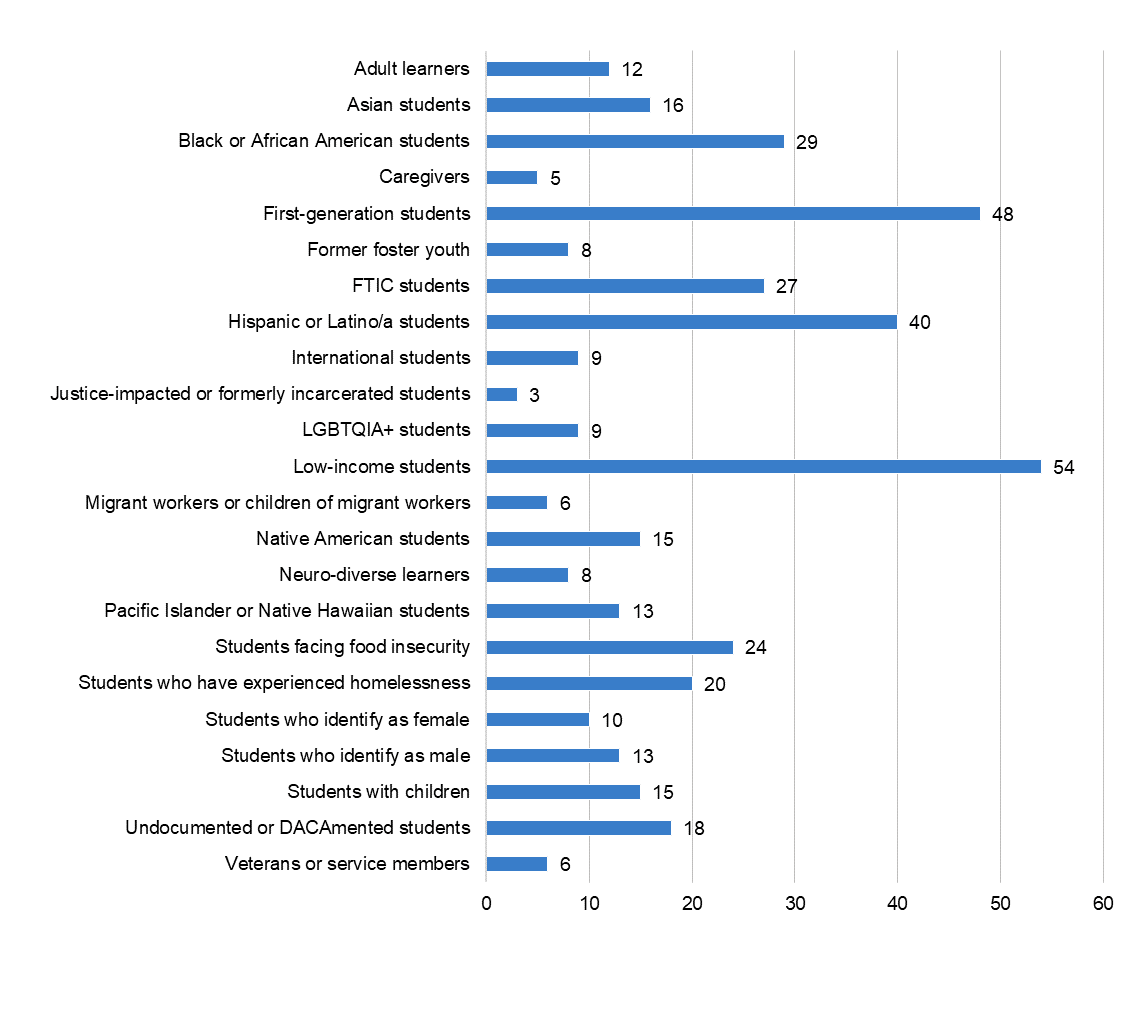
Figure 8 – Percentage of Programs Targeted to First-generation Students by Institutional Degree of Urbanization, n=243
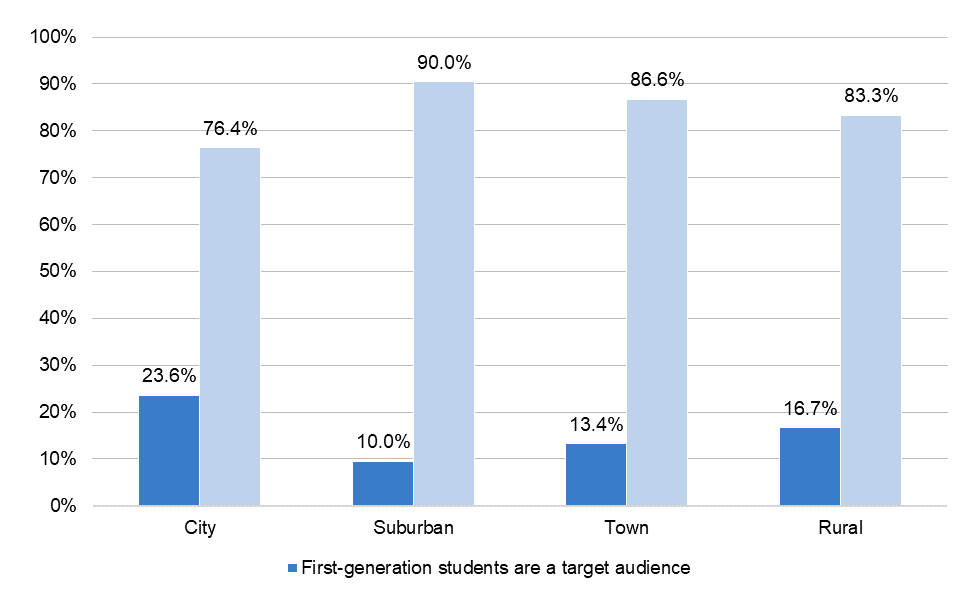
Numerous programs in the inventory also focus on students of color. Specifically, just over 16 percent (n=40) of programs are focused on supporting students who identify as Hispanic or Latino/a, and approximately 12 percent (n=29) of programs are targeted towards Black or African American students (Figure 7). More programs at MSIs identified Black or African American and Hispanic or Latino/a students as target populations than programs at non-MSIs (see Figure 9). Fewer programs were related to supporting Asian, Native American, and Pacific Islander/Native Hawaiian students, pointing to another possible area of improvement for programs included in the inventory. Other opportunities for growth based on participants served include students who are justice-impacted, migrant workers or the children of migrant workers, care givers, veterans, or transfers from another institution (Figure 7). These student groups had very few or no programs attached to them within the inventory.
Figure 9 – Number of Programs by Race/Ethnicity of Students Served and Institutional Status as a Minority-Serving Institution (MSI)
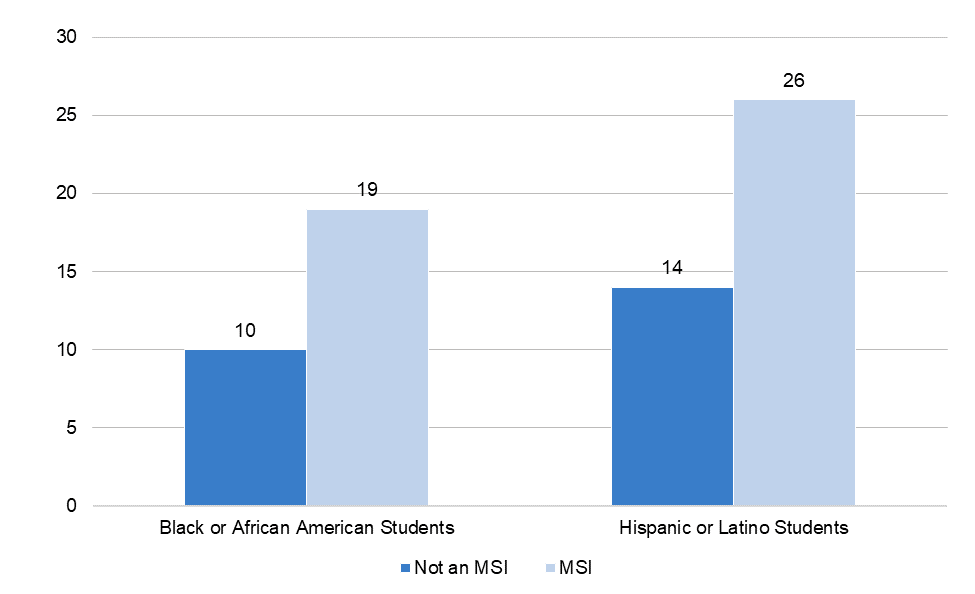
In addition to examining the student sub-populations served by the programs featured in the inventory, we sought to identify how many students were served by each program. We asked programs to estimate the scale of their program, indicating whether the program is small-scale (reaches fewer than 10 percent of its intended target population), medium-scale (reaches between 10-25 percent of its intended target population), or large-scale (reaches more than 25 percent of its intended target population).[26] Most respondents indicated that their program is large-scale (Figure 10). Moreover, almost half (43 percent; n=88) of the programs that shared their plans for future change intend to increase the scale and reach of the program. When asked to describe these plans in more detail, institutions described a variety of structural and personnel updates set to be made to increase the reach of a given program. Of those that were able to approximate the number of students served during the 2021-2022 academic year (n=218), estimates ranged from 0 to 32,000 students, with an average program size of just over 1,212 participants.[27] The programs that had no participants at the time of the form submission were preparing to launch or relaunch with major updates.
Figure 10 – Percentage of Programs by Program Scale, n=231
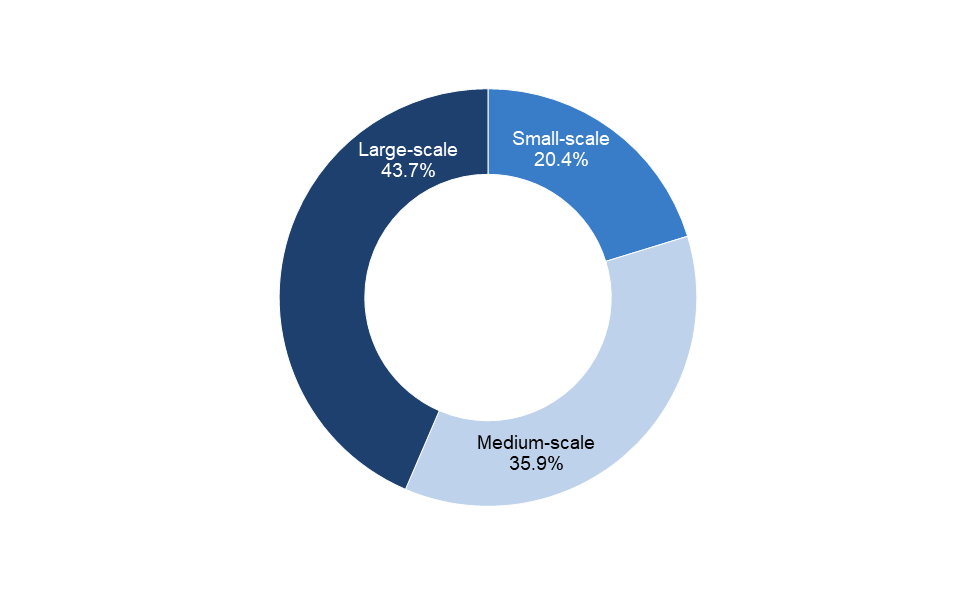
While the programming featured throughout the inventory serves a wide range of target populations—many on a large scale—there are potential areas for development. Programming for parents/guardians and faculty/staff did not make up a large portion of the programs submitted to the inventory, but these stakeholders play an integral role in ensuring student success. Showcasing ways these groups can be prepared to enhance student success in venues like the TX SSPI is exceedingly important.[28] Low-income students, first-generation students, and students of color were selected as target populations for most of the programs within the inventory. Minority-serving and urban institutions are even more likely to offer programs for these student groups. There are fewer programs in the inventory associated with supporting students who are justice-impacted, migrant workers or the children of migrant workers, care givers, veterans, or who have transferred from another institution. As shifts in policy and enrollment continue to diversify the college student body, more programming for these students will likely be needed to ensure overall institutional success and equity of outcomes. Featuring more of these programs in the inventory could be valuable to this end.
Program Offerings
In Figure 11, we share the number of programs by their student success practices. Forty percent of respondents identified one or two practices being leveraged by their program. Goal setting (55 percent) and mentorship (44 percent) were the most commonly selected practices, suggesting that they are widely used throughout the state (Figure 11). However, use of both practices varies based on institutional degree of urbanization (Figures 12 and 13). Programs facilitated by suburban institutions were the least likely to offer academic goal setting and planning (Figure 12). Rural, minority-serving, or four-year institutions were the most likely to offer mentorship programming (see Figure 13 for degree of urbanization and mentorship).
Figure 11 – Number of Programs by Program Practices, n=244
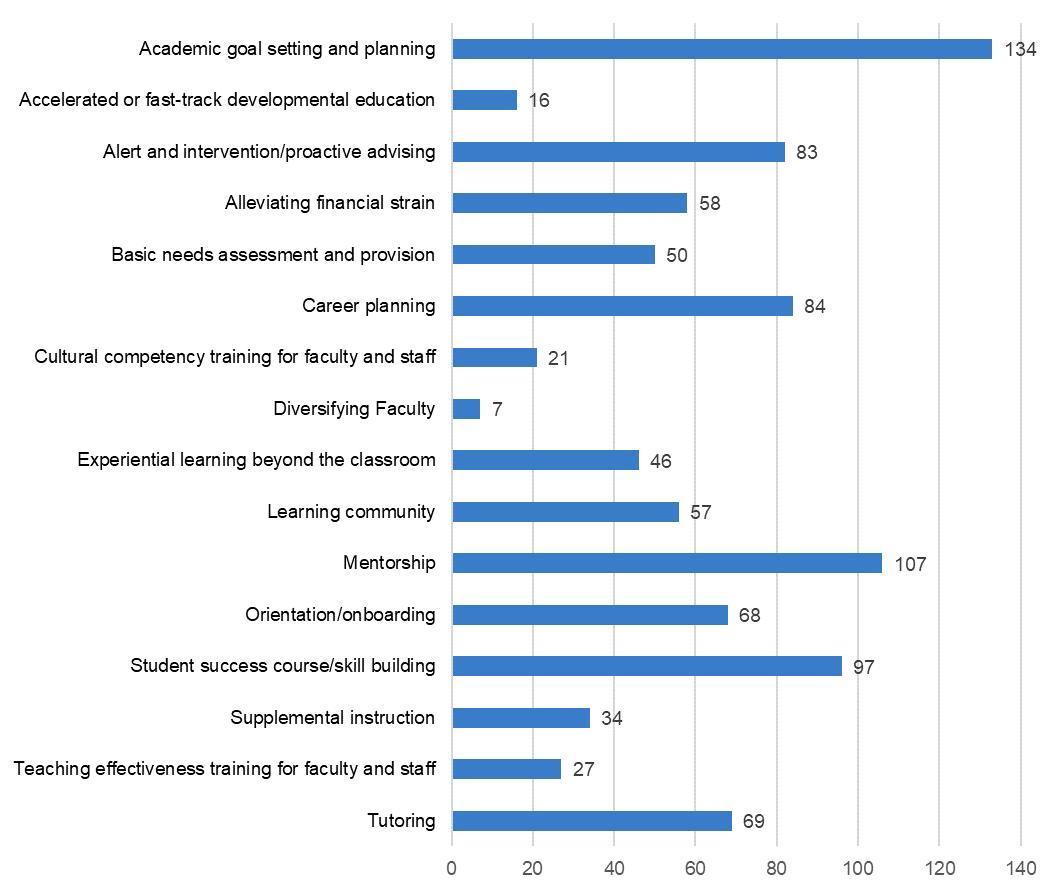
Figure 12 – Percentage of Programs that Practice Academic Goal Setting and Planning by Institutional Degree of Urbanization, n=243
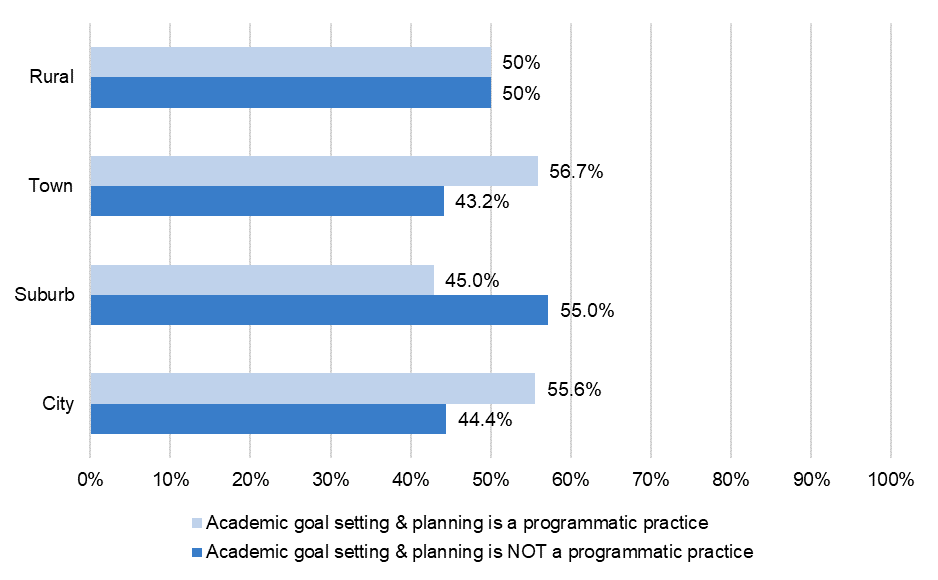
Figure 13 – Percentage of Programs that Practice Mentorship by Institutional Degree of Urbanization, n=243
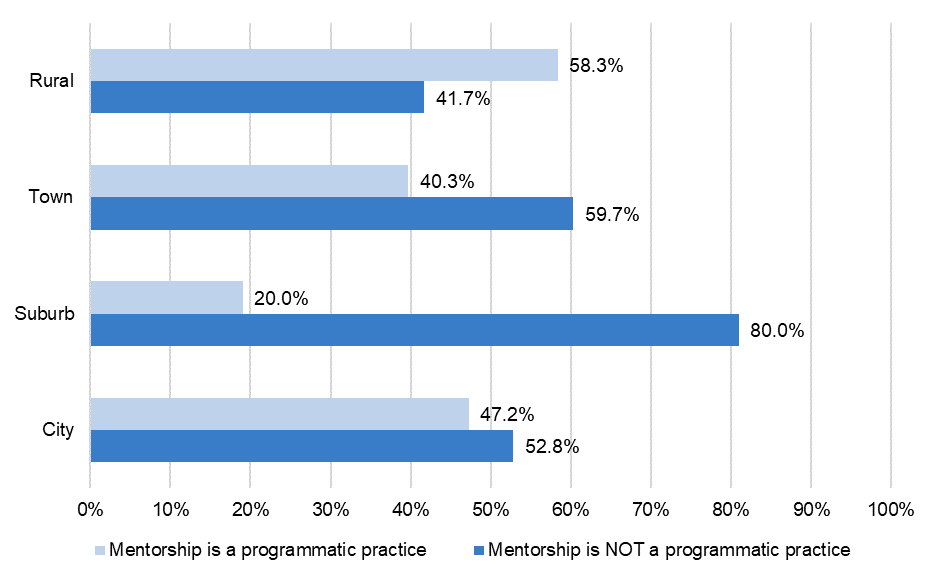
For students, faculty/staff, and parents/guardians alike, these practices or offerings were facilitated through three different delivery formats: 1) hybrid, 2) in-person exclusively, and 3) online exclusively. Figure 14 presents the percentage of programs by delivery format. A majority of programs were offered in a hybrid format (Figure 14). Fewer programs were offered exclusively online (Figure 14). The prevalence of hybrid programming may highlight the continued impact of the COVID-19 pandemic on how institutions of higher education support students.
Figure 14 – Percentage of Programs by Delivery Format, n=243
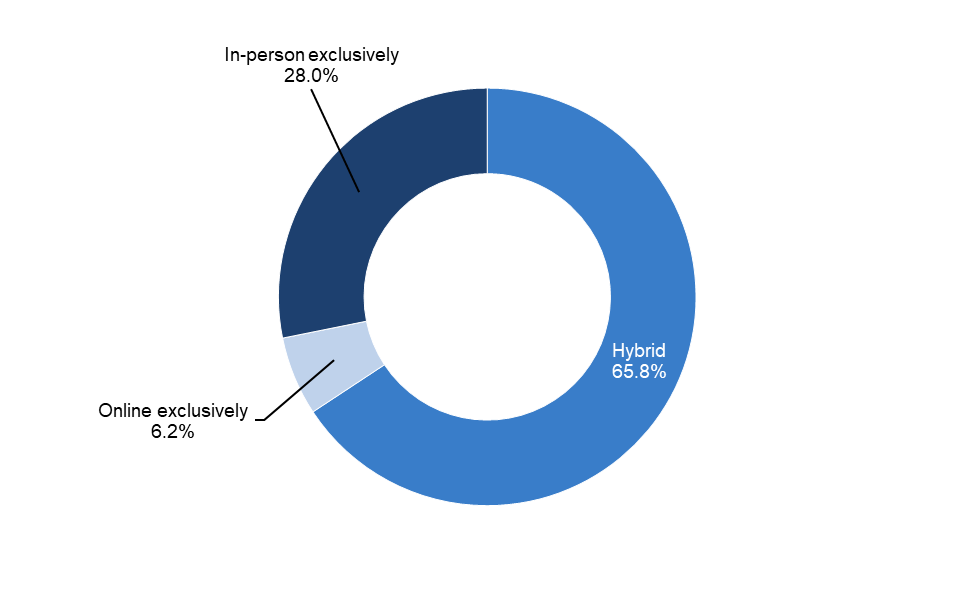
Academic goal setting and planning and mentorship are associated with many programs in the inventory, which underscores a strength of the inventory. Fewer programs focus on developmental education or faculty diversification. While the absence of faculty diversification programs further highlights the opportunity to cultivate more faculty programs in general for the inventory, the lack of developmental education programs may point to a new area for potential growth.
Building a Talent Strong Texas
As this project is a part of the THECB’s investment in its Building a Talent Strong Texas (BTST) strategic plan, we asked form respondents to indicate which goal or goals articulated by the strategic plan are addressed by their programs. The BTST is broken into three key goals: 1) increase postsecondary credential attainment for working age Texans, 2) increase attainment of postsecondary credentials of value, and 3) encourage and facilitate more research, development, and innovation. In Figure 15, we present the percentage of programs aligned with these three broad goals. Roughly half of program liaisons shared that their program fit one of the major goals set forth by BTST, and 25 percent indicated their program did not align to any. While credential attainment was not the most likely to be selected when respondents identified their program’s core objectives, this shifted when they were asked how their programs aligned with BTST. The majority were associated with the first goal, postsecondary credential attainment, rather than the objectives of increasing attainment of valuable credentials or research (Figure 15).
Alignment between programs and the individual goals outlined in BTST does vary by institutional characteristics. Figure 16 illustrates the percentage of programs by alignment with the three BTST goals disaggregated by degree of institutional urbanization. Programs at rural institutions were least likely to identify with the BTST goal of credential attainment. However, programs at these institutions were more likely to be associated with the BTST goal of research, development, and innovation (Figure 16).
Altogether, the form responses around BTST highlights the opportunity to better align student success programming in the inventory, and potentially across Texas, with the current strategic plan. They also present next steps for further investigation to better understand the patterns of alignment across different types of institutions.
Figure 15 – Percentage of Programs by Alignment with Building a Talent Strong Texas Goals, n=244
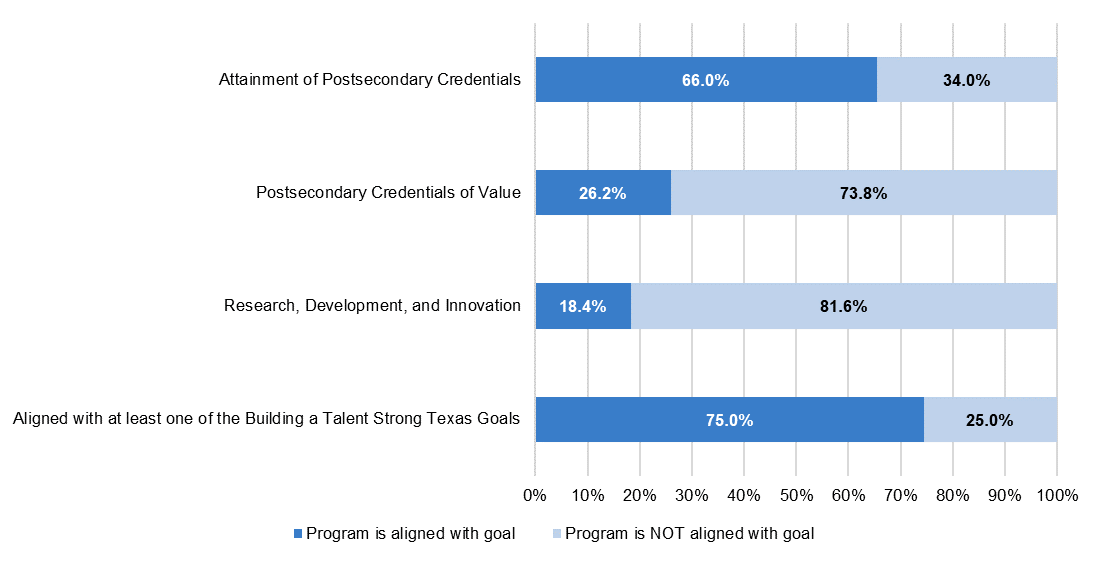
Figure 16 – Percentage of Programs by Institutional Degree of Urbanization and Programmatic Alignment with Building a Talent Strong Texas Goals, n=243
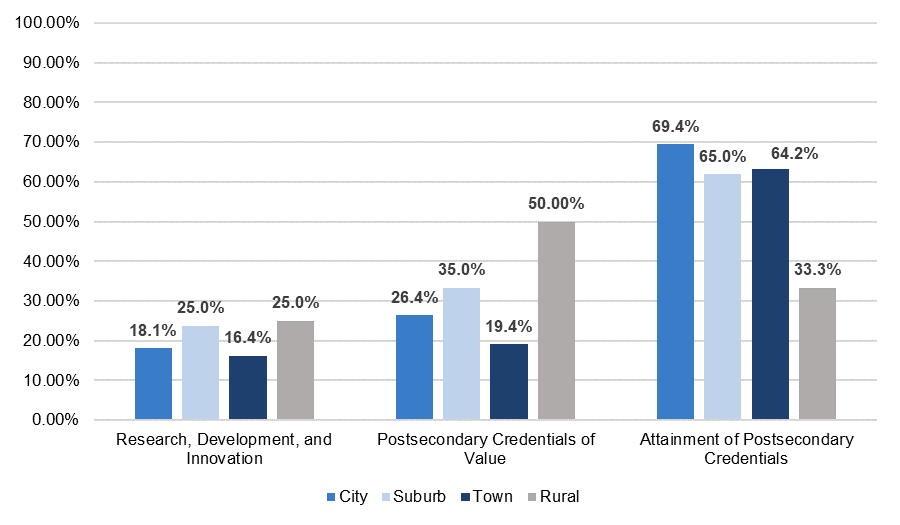
Funding
To leverage these different practices and meet these different goals, programs need to garner resources. Funding can determine the longevity, reach, and efficacy of a program. As such, we asked respondents to share the funding sources for their program. In Figure 17, we share the percentage of programs by the total number of funding resources identified in the form. An overwhelming majority of programs depend on one funder, rather than pulling from various sources simultaneously (Figure 17). As shown in Figure 18, the most common funders were the institution (49 percent) or a particular department within the institution (29 percent). We also asked participants to approximate the budget dedicated to their program. We edited responses to remove non-numerical characters and organized them into seven budget categories ranging from $0 to $1 million-plus. Figure 19 shows the percentage of programs by these budget categories. As one might imagine given the constricting factors created by having a singular, internal funding source, many of the programs in the inventory have smaller budgets of $49,999 or less (Figure 19). Because programs in the inventory often depend on one funder and it is typically within the institution, it may be helpful to equip different programming staff with the capacity to strategically combine different external revenue sources to maximize inflow of resources.
Figure 17 – Percentage of Programs by Total Number of Funding Sources, n=225
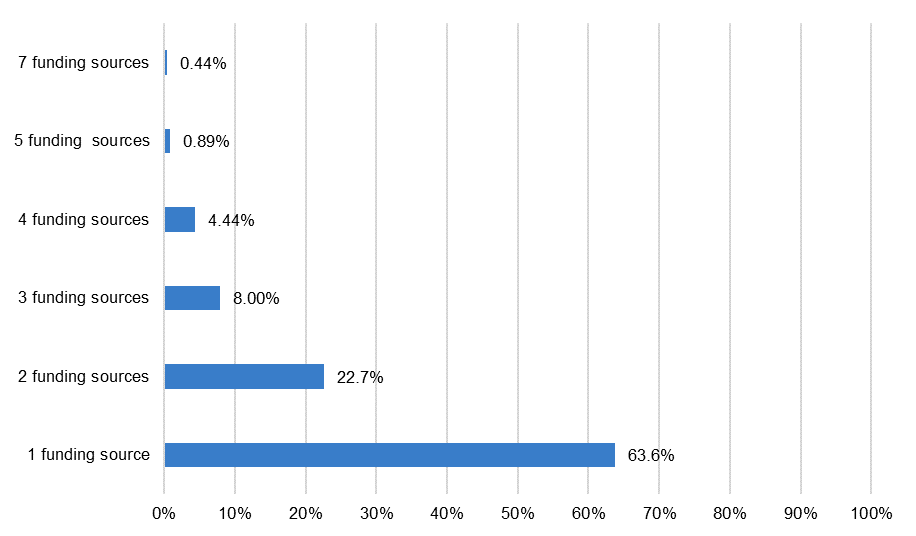
Figure 18 – Percentage of Programs by Total Number of Funding Sources, n=244
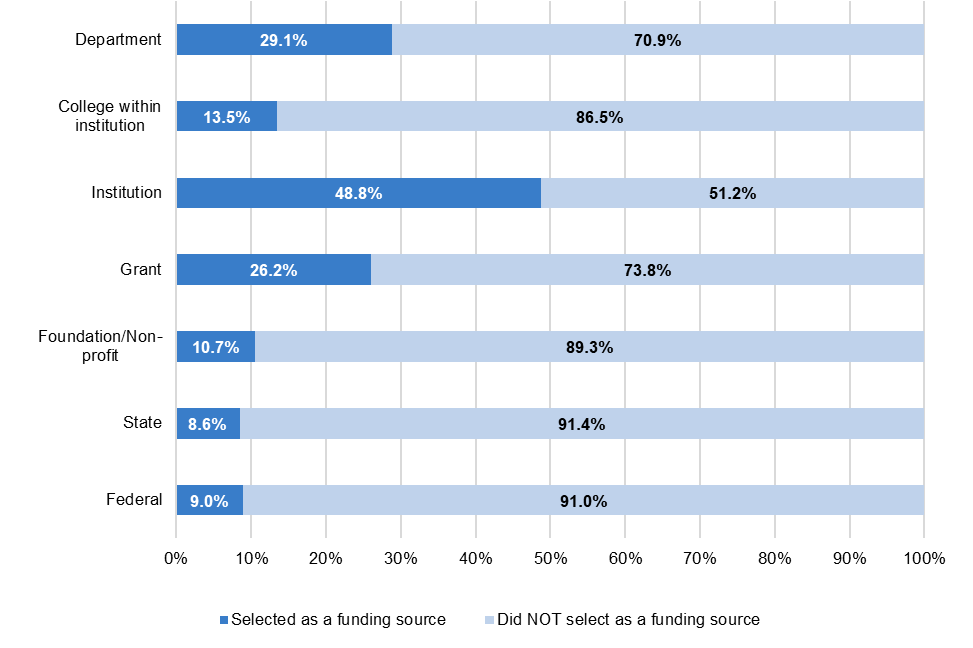
Figure 19 – Percent of Programs by Budget Size, n=183
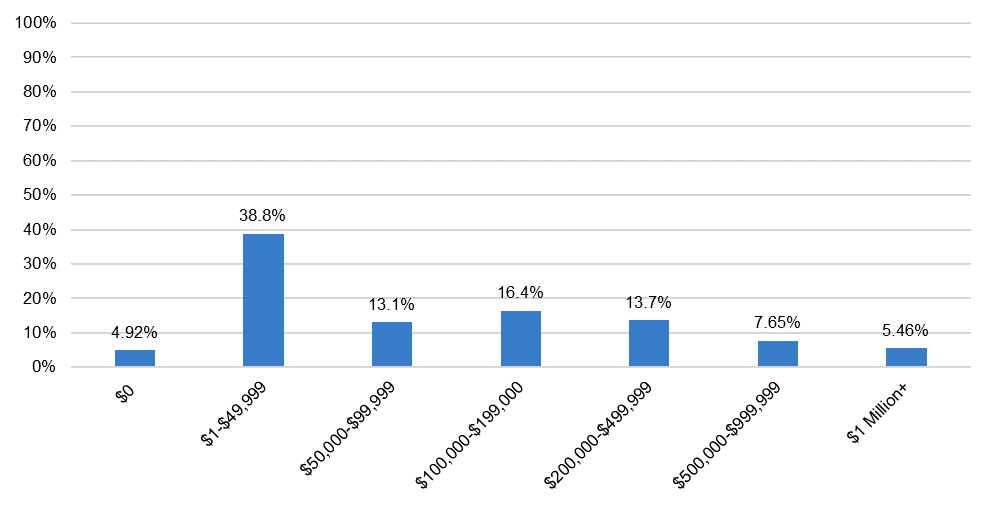
Available Evaluation Data
After asking participants about program inputs like funding, we also asked them about program outputs, particularly measures of impact. Over 80 percent of respondents who answered this question indicated that data had already been collected or were being collected pertaining to their program (Figure 20). In most cases (74 percent; n=148), these data included institutional data as a data source. Other data sources included surveys from faculty/staff, students, and parents/families, and the Coordinating Board Management Report. It should be noted that a very small number (n=2) of programs were able to offer formal evaluation reports ready for public consumption. This underscores the need for future investment in more formal evaluation opportunities to ensure a strong evidence base for student success programming within the inventory and across Texas.
Figure 20– Percent of Program Outcome Data Collection, n=232
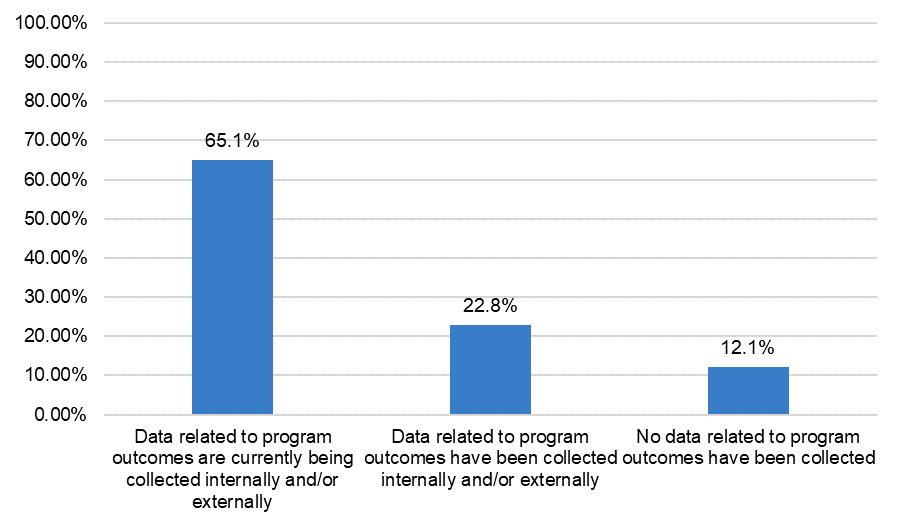
Growth Opportunities
Though this first iteration of the inventory includes sizeable representation from public, undergraduate-serving institutions in Texas, a fuller understanding of student success priorities for institutions of higher education in Texas would need to include private and graduate-only institutions. Gathering information from these institutions could affirm, add to, or complicate the areas of development outlined below.
Based on submissions to the inventory, student retention and persistence are clear priorities for Texas institutions, which are likely made more salient by the enrollment uncertainties that have appeared in the wake of the COVID-19 pandemic. Nevertheless, objectives like creative affordability and ensuring students meet their post-completion goals are integral components of student success and can work to support retention and persistence. As such, cultivating more of these programs to be added to the inventory would not only propel these specific goals but others related to them. The most recent IPEDS data and the responses gathered through the inventory survey suggest that institutions more likely to serve students with greater financial need (e.g., two-year, minority-serving, and schools with lower net tuition) prioritize affordability in student success programing more than their counterparts. A deeper examination of institutions that do not fall into these categories could ascertain whether these present potential areas for development or if these institutions are focusing on priorities that are higher need for the students attending their institutions. Additionally, better alignment between program goals and the BTST strategic plan may ensure that the ambitious goals set forth by the plan are met through a concerted, cross-institutional effort. After addressing the ways in which this particular goal is prioritized across different institutions, it could be helpful to consider who is being served by programming throughout the state.
Parents, guardians, faculty, and staff play pivotal roles in ensuring student success. However, not many of the programs featured in the inventory are targeted towards these stakeholder groups. This might underscore a dearth of programming for these groups, or it could highlight a persisting disconnect between them and student success, as institutions were asked to identify their most impactful student success programs. In either case, further investigation could determine whether institutions need more resources around these types of programming or if more of these programs can be added to the inventory. Justice-impacted, transfer, veteran, migrant worker and children of migrant worker, and care-giver students were not the target of many of the programs in the inventory. Because students carrying these identities have very specific needs, featuring more programs related to these groups may help institutions better support these students and ensure equity of outcomes.
The “how” of student success programming is also an area for future consideration. While many programs in the inventory use goal setting and mentorship to support students, some high-impact practices could profit from further investigation and investment. The lack of faculty diversification programs in the inventory may be a result of the points made earlier around the relative absence of faculty-focused student success programming. Similarly, a disconnect between developmental education and student success may explain why developmental education was selected less than other practices included in the form. Developmental education likely contributes to greater access, which may feel separate from supporting success once students have matriculated. However, if access is seen as the first step towards success, not a separate process, further investigation is warranted to ensure that developmental education and practices like it are at the forefront of institutions’ minds as they consider how to best support students.
The purpose of the TX SSPI is to showcase how institutions across Texas are supporting students in a flexible, easy-to-use format. Though we point out potential growth opportunities above based on the responses currently featured in the inventory, the TX SSPI itself presents perhaps the ultimate opportunity for growth. The inventory not only allows institutions to highlight the excellent work they are doing to support Texas students, but also enables stakeholders to identify best practices and programs being leveraged by institutions across the state, which can be built on to better support the students at their institution. Additionally, multi-institutional organizations and state agencies like the THECB can use the information in the inventory to scale particularly promising programs up to group or statewide initiatives. The inventory presents a unique opportunity for institutional leaders and student success professionals at different institutions to collaborate and innovate around student success programming offered across the state, continuing to make student success a cross-institutional, statewide endeavor.
Appendix
Program Nomination Process
Initially, in an effort to prioritize larger scale and more established programs, as well as those which could demonstrate their impact and effectiveness, the inventory focused on programs which had served at least 100 students or had gathered data related to program outcomes. However, newer and more boutique programming could still be nominated by institutions for inclusion in the inventory. We conducted a scoping activity with the project’s full collaborative team, which includes researchers from TEPI and THECB staff, to ensure alignment in the team’s conceptualization of student success programming and to refine the language of the scoping criteria.
Table 3 shows the scoping criteria sent to Texas institutions during the data collection phase of the project. While flexible, the inventory eligibility criteria aimed to focus on innovative programs that targeted specific subpopulations at colleges and universities. However, as we discuss in further detail in this report, we relaxed the eligibility criteria outlined in this initial definition to better reflect the types of programs that were nominated by institutional leaders.
Table 3 – Criteria for the Student Success Program Inventory Inclusion
| Student Success Program Requirements | ||||
|
|
|||
Eligible programs and initiatives must:
OR
OR
|
A. | Has served at least 100 participants to date. | ||
| B. | Utilizes at least one of the following practices: | |||
|
|
|
||
| C. | An evaluation (internal or external) of the program’s effectiveness has been undertaken, is in progress, or will take place within the next year. | |||
| Please Note: If your institution has more than five programs or initiatives that meet these criteria, please only provide information for the five programs or initiatives, which your institution views as the most impactful or innovative (i.e., focused on creative use of resources and novel approaches), and for which you have at least one current staff member who can provide detailed information regarding each selected program or initiative. | ||||
Copy of Form 1
We have included a copy of the first form sent to institutions to gather program nominations for the Student Success Program Inventory below. Since this form was administered using Qualtrics, a survey software, we have made some edits to ensure that the form logic is understandable in this format.
TX SSPI Initial Survey
Thank you for completing this form, which is part of the Texas Higher Education Coordinating Board’s (THECB) Student Success Program and Initiative Inventory. This inventory will be a searchable database that documents the features and outcomes of Texas public colleges’ student-success initiatives. This inventory will be hosted on the OERTX Repository, a public platform facilitated by THECB.
The questions in this form are to identify undergraduate student success programs that will potentially be included in this inventory and collect contact information for individuals who are able to speak to details about these programs. The form is administered by an external research and advising group (Ithaka S+R) and takes about 10 minutes to complete. As further described below, by listing student success programs within this form, you agree to the inclusion of this program and information pertaining to it in an inventory database to be shared on a public platform.
Click on the “Begin Survey” below to agree to the terms of the participation and start the survey.
The information and resources pertaining to student success programs shared as a result of this form will be shared on a hub within the OERTX Repository, which is maintained by ISKME and is publicly available. Program information hosted on the hub may include identifying information related to points of contact for included programs. Please note that Ithaka S+R uses a third party provider, Qualtrics, to administer the form online.
Please select your institution from the dropdown menu below.
▼ Alvin Community College (1) … Other (103)
[Displays if their institution is not listed in dropdown menu]
When asked to select your institution, you selected “Other”. Please write the full name of your institution below.
_______________________________________________________________
Please provide your own contact information in case there are any follow-up questions.
- Your first name __________________________________________________
- Your last name __________________________________________________
- Title/position __________________________________________________
- Email address __________________________________________________
Below, we have included our definition of student success for the purposes of this project. Based on this definition, does your institution offer any programs or initiatives that support undergraduate student success?
Student Success Definition
We consider student success to be a multi-faceted end goal that is dependent upon students’ core objectives for pursuing higher education as well as meeting key indicators institutions use to assess the educational experience for the purposes of funding and compliance. Within this multifaceted end goal, we prioritize objectives associated with the goals set forth by the Texas Higher Education Coordinating Board’s Building a Talent Strong Texas 2022-2030 Strategic Plan. By examining relevant research and the tenets of the strategic plan, we have identified the following as core objectives of undergraduate student success programs and initiatives. These core objectives are inclusive of common student and institutional goals and also align with the Strategic Plan’s focus on credential attainment and credentials of value:
- Persistence/Retention
- Credential Attainment/Graduation
- Academic Performance (i.e., student grades or student learning)
- Post-Completion Goals (e.g., obtaining employment, continuing education, career advancement, economic development)
- Social Development & Well-being (e.g., belonging, building social networks, developing soft skills, mental health)
- Make Credential Attainment Affordable (n.b., in ways that are beyond providing students with scholarships or other typical state and federal financial aid)
Student Success Program Definition
We define ‘student success program’ as a program or initiative that aims to assist undergraduate students and/or institutions in achieving the core objectives identified above, and meets the following criteria:
| Student Success Program Requirements | ||||
|
|
|||
Eligible programs and initiatives must:
OR
OR
|
A. | Has served at least 100 participants to date. | ||
| B. | Utilizes at least one of the following practices: | |||
|
|
|
||
| C. | An evaluation (internal or external) of the program’s effectiveness has been undertaken, is in progress, or will take place within the next year. | |||
| Please Note: If your institution has more than five programs or initiatives that meet these criteria, please only provide information for the five programs or initiatives, which your institution views as the most impactful or innovative (i.e., focused on creative use of resources and novel approaches), and for which you have at least one current staff member who can provide detailed information regarding each selected program or initiative. | ||||
- YES, my institution has one or more programs/initiatives that are characterized as student success programming based on the definition above
- NO, my institution does NOT have one or more programs/initiatives that are characterized as student success programming based on the definition above
[Displays if respondent indicates that their institution has programs that meet the student success program requirements]
Instructions for student success program list:
In the text boxes below, please list 1 to 5 programs that meet the listed criteria and for which there is an individual at your institution who can provide detailed program information.
- Each text box below should hold a single student success program.
- Program names should not be repeated throughout your list.
- If you have fewer than 5 programs to share, please leave the remaining boxes empty.
- If your institution has more than 5 programs or initiatives that meet the necessary criteria, please only provide information for the 5 programs or initiatives which your institution views as the most impactful or innovative.
Please use the specific name used to refer to the program at your institution, rather than a generic description, and include any acronyms associated with the program in parentheses.
- Program 1 __________________________________________________
- Program 2 __________________________________________________
- Program 3 __________________________________________________
- Program 4 __________________________________________________
- Program 5 __________________________________________________
Please provide the contact information for someone within your institution who can answer questions about specific program details for [Program 1] in the boxes below.
- First name __________________________________________________
- Last name __________________________________________________
- E-mail __________________________________________________
Please provide the contact information for someone within your institution who can answer questions about specific program details for [Program 2] in the boxes below.
- First name __________________________________________________
- Last name __________________________________________________
- E-mail __________________________________________________
Please provide the contact information for someone within your institution who can answer questions about specific program details for [Program 3] in the boxes below.
- First name __________________________________________________
- Last name __________________________________________________
- E-mail __________________________________________________
Please provide the contact information for someone within your institution who can answer questions about specific program details for [Program 4] in the boxes below.
- First name __________________________________________________
- Last name __________________________________________________
- E-mail __________________________________________________
Please provide the contact information for someone within your institution who can answer questions about specific program details for [Program 5] in the boxes below.
- First name __________________________________________________
- Last name __________________________________________________
- E-mail __________________________________________________
Copy of Form 2
We have included a copy of the second form sent to institutions to gather program information from the nominated for the Student Success Program Inventory. Since this form was administered using Qualtrics, a survey software, we have made some edits to ensure that the form logic is understandable in this format.
TX SSPI Survey (Form 2)
Thank you for completing this form, which is part of the Texas Higher Education Coordinating Board’s (THECB) Student Success Programs Inventory. This inventory will be a searchable database that documents the features and outcomes of Texas public colleges’ student-success programs and initiatives hosted on the OERTX Repository, a public platform facilitated by THECB.
The questions in this form are to gather information pertaining to undergraduate student success programs and initiatives that will potentially be included in this inventory. The form is administered by an external research and advising group (Ithaka S+R) and takes about 30 minutes to complete.
As further described below, by sharing program details within this form, you agree to the inclusion of this program and information pertaining to it in an inventory database to be shared on a public platform.
Click on the “Begin Survey” below to agree to the terms of the participation and start the survey.
The information and resources pertaining to student success programs shared as a result of this form will be shared on a hub within the OERTX Repository, which is maintained by ISKME and is publicly available. Program information hosted on the hub may include identifying information related to points of contact for included programs. Please note that Ithaka S+R uses a third-party provider, Qualtrics, to administer the form online.
Below, we have included a PDF version of the form that can be used to collaborate with your colleagues around responses prior to entering responses into the form. The PDF is fillable but any responses included in the PDF will NOT be recorded. To be recorded, responses must be included in the online form.
Please provide the name of the program or initiative at your institution that you have been asked to provide information for. You can find the program name in the email containing the link to this survey; however, if that program name was not accurate, please feel free to provide either a corrected or more specific program name if appropriate.
_______________________________________________________________
Please select the statement below that best describes your familiarity with [Program Name].
- I’m familiar with [Program Name], and will be able to answer a set of questions about specific program details
- I’m NOT familiar with [Program Name], and will NOT be able to answer a set of questions about specific program details
- Unsure
[Displays if respondent is unfamiliar with program]
You indicated that you may not be familiar with the program this form is associated with. We ask that you review the PDF version of this form provided earlier to verify whether or not you are able to answer the questions within this form. If not, please provide contact information below for an individual that can speak to program details.
- First name __________________________________________________
- Last name __________________________________________________
- Title/Position __________________________________________________
- Email address __________________________________________________
Before responding to the following questions, please provide your contact information below.
- First name _________________________________________________
- Last name __________________________________________________
- Title/Position __________________________________________________
- Email address __________________________________________________
In the next sections we have included our definition of student success and student success programming for the purposes of this project. We will ask a series of questions to determine whether [Program Name] meets all criteria for inclusion in the inventory.
Student Success Definition
We consider student success to be a multi-faceted end goal that is dependent upon students’ core objectives for pursuing higher education as well as meeting key indicators institutions use to assess the educational experience for the purposes of funding and compliance. Within this multifaceted end goal, we prioritize objectives associated with the goals set forth by the Texas Higher Education Coordinating Board’s Building a Talent Strong Texas 2022-2030 Strategic Plan. By examining relevant research and the tenets of the strategic plan, we have identified the following as core objectives of undergraduate student success programs and initiatives. These core objectives are inclusive of common student and institutional goals and also align with the Strategic Plan’s focus on credential attainment and credentials of value:
Please select the goal(s) of [Program Name] from the options below.
- Retention/persistence
- Credential attainment/graduation
- Academic performance (i.e., student grades or student learning)
- Post-completion goals (e.g., obtaining employment, continuing education, career advancement, economic development)
- Social development and well-being (e.g., belonging, building social networks, developing soft skills, mental health)
- Make credential attainment affordable (n.b., in ways that are beyond providing students with scholarships or other typical state and federal financial aid)
- Other (please feel free to use this text box to provide additional information about this program’s goal as appropriate) __________________________________________________
- None of these
Student Success Program Definition
We define ‘student success program’ as a program or initiative that aims to assist undergraduate students and/or institutions in achieving the core objectives identified above, and meets the following criteria:
Programming must be targeted. Eligible programs and initiatives must serve one of the groups below.
From the options below, please select the primary stakeholder group(s) that [Program Name] seeks to engage.
- A specific student population rather than the general student body
- Faculty or staff
- Students’ parents/guardians or families
- None of these (please specify the target population for this program below) __________________________________________________
- This program is open to the entire general student body
Programming must also meet at least one of the following (A, B, or C):
A. Has served at least 100 participants to date.
B. Utilizes at least one of the following practices:
- Orientation/Onboarding
- Academic goal setting and planning
- Accelerated or fast-track developmental education
- Student success course/skill building
- Learning community
- Alert and intervention/Proactive advising
- Experiential learning beyond the classroom (e.g., internships)
- Tutoring
- Supplemental Instruction
- Career planning
- Basic needs assessment and provision (e.g., food, childcare)
- Mentorship
- Cultural competence training/professional development for faculty and staff
- Teaching effectiveness training for faculty and staff
- Alleviating financial strain
- Diversifying faculty
C. An evaluation (internal or external) of the program’s effectiveness has been undertaken, is in progress, or will take place within the next year.
From the options below, please select the statement(s) that are true for [Program Name].
- Has served at least 100 participants to date
- Utilizes one of the practices listed above
- A evaluation (internal or external) of the program’s effectiveness has been undertaken, is underway, or will take place within the next year
- None of these
Please write a short summary describing [Program Name] below. Include the program’s core features, its goals and objectives, and its target population.
PLEASE NOTE: This is the description that would appear on the program inventory about your program, so please include any key information that the general public ought to know to understand what this program is about.
_______________________________________________________________
_______________________________________________________________
_______________________________________________________________
_______________________________________________________________
_______________________________________________________________
[Displays if the program serves students]
Please select the program’s target population(s) from the options below.
- Adult learners
- Asian students
- Black or African-American students
- Caregivers
- First-generation students
- Former foster youth
- Hispanic or Latino/a students
- International students
- Justice-impacted or formerly incarcerated students
- LGBTQIA+ students
- Low-income students
- Migrant workers or children of migrant workers
- Native American students
- Neuro-diverse learners and students with intellectual and/or developmental disabilities
- Pacific Islander or Native Hawaiian students
- Students currently experiencing or who have experienced homelessness
- Students facing food insecurity
- Students with children
- Students with disabilities
- Students who identify as female
- Students who identify as male
- Transfer students
- Undocumented or DACAmented students
- Veterans or service members
- Other __________________________________________________
- Unknown
[Displays if the program serves students’ parents/guardians or families]
Please select the program’s target population(s) from the options below.
- Asian parents/guardians or families
- Black or African-American parents/guardians or families
- Hispanic or Latino/a parents/guardians or families
- Low-income parents/guardians or families
- Migrant worker parents/guardians or families
- Native American parents/guardians or families
- Pacific Islander or Native Hawaiian parents/guardians and families
- Parents/guardians and families currently experiencing or who have experienced homelessness
- Parents/guardians and families facing food insecurity
- Parents/guardians and families of first-generation students
- Parents/guardians and families of former foster youth
- Parents/guardians and families of international students
- Parents/guardians and families of LGBTQIA+ students
- Parents/guardians and families of neuro-diverse learners
- Parents/guardians and families of students with disabilities
- Parents/guardians and families of transfer students
- Parents/guardians and families of veterans or service members
- Parents/guardians and families who are justice-impacted or formerly incarcerated
- Undocumented or DACAmented parents/guardians and families
- Other __________________________________________________
- Unknown
Please indicate the current estimated scale of [Program Name].
(Note: this classification of scale is based on the metrics used in an evaluation of Achieving the Dream initiatives.)
- Large-scale (reaches more than 25 percent of its intended target population)
- Medium-scale (reaches between 10 and 25 percent of its target population)
- Small-scale (reaches fewer than 10 percent of its target population)
- Unknown
Does your institution have any plans to scale up or institute any substantial changes to [Program Name] within the next two years?
- Yes, we do have plans to change the program within the next two years.
- No, we do not have plans to change the program within the next two years.
- Unknown
[Displays if the program has plans to alter the scale]
You indicated that your institution has planned to scale up or institute substantial changes to [Program Name] within the next two years. Please describe those plans below, including estimated timelines.
_______________________________________________________________
_______________________________________________________________
_______________________________________________________________
_______________________________________________________________
_______________________________________________________________
In the box below, please write a number (using no commas) that reflects either the exact or estimated cumulative number of participants served by [Program Name] since it started.
_______________________________________________________________
In the box below, please write the number of unique participants (using no commas) being served by [Program Name] in the 2021-2022 academic year.
_______________________________________________________________
[Displays if the program serves students]
Please select all the program offerings that apply to [Program Name] from the options below
- Academic goal setting and planning
- Accelerated or fast-track developmental education
- Alert and intervention/proactive advising
- Alleviating financial strain
- Basic needs assessment and provision
- Career Planning
- Experiential learning beyond the classroom (e.g., internships, community-based projects)
- Learning community
- Orientation/onboarding
- Mentorship
- Student success course/skill building
- Supplemental Instruction
- Tutoring
- Other (please feel free to use this text box to provide additional information about this program’s goal as appropriate) __________________________________________________
- Unknown
[Displays if the program serves students’ parents/guardians or families]
Please select all the program offerings that apply to [Program Name] from the options below
- Orientation/onboarding
- Mentorship
- Peer Network
- Other (please feel free to use this text box to provide additional information about this program’s goal as appropriate) __________________________________________________
- Unknown
[Displays if the program serves faculty or staff]
Please select all the program offerings that apply to [Program Name] from the options below
- Cultural Competence Training
- Faculty Diversification
- Student Mentorship Training
- Teaching Effectiveness Training
- Other (please feel free to use this text box to provide additional information about this program’s goal as appropriate) __________________________________________________
- Unknown
Please select the statement that best describes the process for participants to enroll in [Program Name].
- Participants must apply to enroll in this program
- Participants are automatically enrolled in this program if they meet eligibility requirements
- All stakeholders have access to this program. As such, there is no enrollment process
- Other __________________________________________________
- Unknown
[Displays if the participants apply to the program]
In the box below, please include a website that can be used to apply to [Program Name].
_______________________________________________________________
[Displays if participants are automatically enrolled in the program]
You indicated that participants are automatically enrolled in [Program Name]. Please summarize the identification process for this program below.
_______________________________________________________________
_______________________________________________________________
_______________________________________________________________
_______________________________________________________________
_______________________________________________________________
[Displays if the program serves students]
Please select the eligibility criteria categories that apply to [Program Name] from the list below. Share specific benchmarks for each selected criterion in the associated box if applicable.
- Admission Status/Performance Prior to Matriculation __________________________________________________
- Course Enrollment (i.e., enrolled in specific course(s) __________________________________________________
- Course Grade __________________________________________________
- Disability Status __________________________________________________
- Enrollment Status (e.g., full-time) __________________________________________________
- First-Generation
- Gender
__________________________________________________
- GPA
__________________________________________________ - High School Attended __________________________________________________
- Household Income __________________________________________________
- Intended Certificate/Degree __________________________________________________
- Intended Graduation Date/Timeline __________________________________________________
- Major
__________________________________________________ - Parental/Caregiver Status (e.g., student is a single parent) __________________________________________________
- Pell Eligibility
- Race/Ethnicity __________________________________________________
- Student Classification
- Transfer Status
- Veteran Status
- Other
__________________________________________________ - Unknown
[Displays if the program serves faculty or staff]
Please select the eligibility criteria categories that apply to [Program Name] from the list below. Share specific benchmarks for each selected criterion in the associated box if applicable.
- College or School (e.g., School of Social Sciences) __________________________________________________
- Department __________________________________________________
- Full-Time Status __________________________________________________
- Race/Ethnicity __________________________________________________
- Title/Position __________________________________________________
- Other
__________________________________________________ - No Eligibility Criteria
[Displays if the program serves students’ parents/guardians or families]
Please select the eligibility criteria categories that apply to [Program Name] from the list below. Share specific benchmarks for each selected criterion in the associated box if applicable.
- Household Income __________________________________________________
- Parental/Caregiver Status (e.g., parent is a single-parent) __________________________________________________
- Race/ethnicity __________________________________________________
- Student’s Admission Status/Performance Prior to Matriculation __________________________________________________
- Student’s Classification __________________________________________________
- Student’s Disability Status __________________________________________________
- Student is First-generation
- Student’s GPA __________________________________________________
- Student’s High School Attended __________________________________________________
- Student’s Intended Certificate/Degree __________________________________________________
- Student’s Intended Graduation Date/Timeline __________________________________________________
- Student’s Major __________________________________________________
- Student’s Pell Eligibility
- Student’s Transfer Status __________________________________________________
- Veteran Status
- Other
__________________________________________________ - Unknown
From the options below, please indicate the funding source(s) for [Program Name].
- College (e.g., College of Education) __________________________________________________
- Department __________________________________________________
- Federal government __________________________________________________
- Foundation or non-profit organization __________________________________________________
- Grant
__________________________________________________ - Institution __________________________________________________
- State
__________________________________________________ - Other
__________________________________________________ - Unknown
In the text box below, please write the dollar amount budgeted towards [Program Name] per fiscal year. Please note, the program budget will NOT be included in the online inventory.
_______________________________________________________________
Please enter the year [Program Name] started at your institution in the text box below.
_______________________________________________________________
Please select the year that [Program Name] ended at your institution.
▼ It is still ongoing. (1) … 2022 (11)
Please select the statement that best describes the format of [Program Name].
- The program is in-person only.
- The program is online only.
- The program has a hybrid format.
Please select the statement(s) below that describe [Program Name].
- Data related to program outcomes have been internally collected in the past
- Data related to program outcomes have been externally collected in the past
- Data related to program outcomes have been internally and externally collected in the past
- Data related to program outcomes are currently being internally collected
- Data related to program outcomes are currently being externally collected
- Data related to program outcomes are currently being internally and externally collected
- No data related to outcomes have been collected from this program
- Unknown
[Displays if the program was evaluated in the past]
You indicated that an evaluation (internal or external) of the effectiveness of [Program Name] has been undertaken. Please select the option below that describes the availability of a report detailing the findings of the evaluation of [Program Name].
- The evaluation report is available online.
- You have the evaluation report document and can upload the file.
- The evaluation report is unavailable.
- Other __________________________________________________
[Displays if the evaluation report is available online]
Please share the URL for the evaluation report below.
_______________________________________________________________
[Displays if the evaluation is available as a file]
Please upload a copy of the evaluation report of [Program Name].
Note: Only 1 file may be uploaded here and the file may not exceed 100MB. If your report exceeds the file size maximum, or if you wish to submit multiple files, please email the files to ssitexas@ithaka.org.
[Displays if the program is currently being evaluated]
You indicated that data (internal or external) related to program outcomes for [Program Name] is currently being collected. We understand that a final evaluation report is unavailable, but do you have any preliminary data you are able to share?
This could be any data collected to date, including but not limited to (a) demographic or academic characteristic statistics on the participants served or (b) early data on graduation rates, retention rates, or other outcome variables of interest.
- You have a file with preliminary data information that you can upload
- You have some preliminary data information that you can copy/paste into a text box
- No data is available to share
- Other __________________________________________________
[Displays if a file with preliminary data is available]
Please upload a file with any preliminary data on [Program Name] that you are willing to share.
Note: Only 1 file may be uploaded here and the file may not exceed 100MB. If your report exceeds the file size maximum, or if you wish to submit multiple files, please email the files to ssitexas@ithaka.org.
[Displays if they can copy/paste preliminary data]
Please provide any preliminary data on [Program Name] that you are willing to share.
_____________________________________________________________
_______________________________________________________________
_______________________________________________________________
_______________________________________________________________
_______________________________________________________________
[Displays if data have been or are currently being collected]
Please select the option(s) below that best describes the data that have been or are currently being used to evaluate [Program Name].
- Coordinating Board Management Report or State Data
- Institutional Data
- Parent and Family Focus Groups/Interviews
- Parent and Family Surveys
- Staff/Faculty Focus Groups/Interviews
- Staff and/or Faculty Surveys
- Student Focus Groups/Interviews
- Student Surveys
- Other __________________________________________________
- Unknown
Please select the statement below that best reflects the relationship of this program with COVID-19.
- This program was started to mitigate the consequences of the COVID-19 pandemic
- This program was expanded to mitigate the consequences of the COVID-19 pandemic
- This program is unrelated to efforts to mitigate the consequences of the COVID-19 pandemic
- This program was reduced, temporarily paused, or eliminated in response to the COVID-19 pandemic
- Other __________________________________________________
- Unknown
Has [Program Name] received any external awards?
- Yes, the STAR award.
- Yes, other: __________________________________________________
- Not at this time.
Please write the name of the office, department, or college primarily responsible for [Program Name].
_______________________________________________________________
Does [Program Name] have a website or designated webpage?
- Yes
- No
[Displays if program has a website or designated webpage]
Please copy and paste the website URL associated with [Program Name].
_______________________________________________________________
[Displays if program does not have a website or designated webpage]
You indicated that [Program Name] does not have a designated website or webpage. Please upload a file that could be featured on the Student Success Program Inventory in place of a website or webpage. Files may include promotional materials such as flyers, brochures, infographics, etc.
Note: Only 1 file may be uploaded here and the file may not exceed 100MB. If your file exceeds the file size maximum, please email the files to ssitexas@ithaka.org.
Please write the full name of the best person to contact for information about [Program Name] in the text box below. (If you are the best person to contact, please write your own name.)
_______________________________________________________________
Please include the institutional email address for the program contact person in the text box below. (If you are the best person to contact, please write your own email address.)
_______________________________________________________________
Please write the institutional phone number for the program contact person in the text box below. (If you are the best person to contact, please write your own phone number.)
_______________________________________________________________
The final questions in this form pertain to the Texas Higher Education Coordinating Board Building a Talent Strong Texas Strategic Plan. You can find more information about this initiative here. Does your program align with any of the following goals from Building a Talent Strong Texas? (Check all that apply.)
- Attainment of certificates and degrees so at least 60% of Texans ages 25-64 have a postsecondary credential of value by 2030.
- Postsecondary credentials of value aligned with workforce demands that will raise incomes for individual Texans while reducing debt.
- Research, development, and innovation that drives discovery, improves lives, broadens education, and creates new jobs.
- None of the above.
[Displays if program is aligned with any of the goals of Building a Talent Strong Texas]
You indicated that this program aims to support goals set forth by the Texas Higher Education Coordinating Board Building a Talent Strong Texas Strategic Plan. In the box below, please further explain your response by describing how [Program Name] aims to support this plan.
_______________________________________________________________
_______________________________________________________________
_______________________________________________________________
_______________________________________________________________
_______________________________________________________________
Before submitting this survey, please share any additional program details you were not able to share throughout the form.
_______________________________________________________________
_______________________________________________________________
_______________________________________________________________
_______________________________________________________________
_______________________________________________________________
You have reached the end of this form. We have included a PDF of your responses for your records in the next section. You must hit the next button below for your answers to be fully recorded. If you have any questions related to this form, please reach out to us at ssiTexas@ithaka.org.
Endnotes
- Texas Higher Education Coordinating Board, Texas Higher Education Enrollments 2022, 28 October 2022, https://reportcenter.highered.texas.gov/reports/data/. ↑
- Ran Liu, “Disparities in Disruptions to Postsecondary Education Plans During the COVID-19 Pandemic,” AERA Open 79, no. 1 (16 September 2021): 1-19, https://doi.org/10.1177/2332858421104540. ↑
- Joe Cuseo, “Student Success: Definition, Outcomes, Principles and Practices,” Esource for College Transitions, University of South Carolina: National Resource Center for the First-Year Experience & Students in Transition, 2014, https://www2.indstate.edu/studentsuccess/pdf/defining%20student%20success.pdf. ↑
- Ibid. ↑
- For an example of an institution that has adopted this conceptualization of student success, see this statement by the associate provost of Michigan State, in which he discusses the relationship between student success and the university’s strategic plan: Mark Largent, “From Students’ Success to Student Success,” Michigan State University, https://undergrad.msu.edu/news/view/id/323. ↑
- The Center for Community College Student Engagement published three reports in this series: ”A Matter of Degrees: Promising Practices for Community College Student Success (A First Look),” The University of Texas at Austin, Community College Leadership Program, 2012; “A Matter of Degrees: Engaging Practices, Engaging Students (High-Impact Practices for Community College Student Engagement),” The University of Texas at Austin, Community College Leadership Program, 2013; “A Matter of Degrees: Practices to Pathways (High-Impact Practices for Community College Student Success,” The University of Texas at Austin, Program in Higher Education Leadership, 2014. ↑
- Eline Sneyers and Kristoff De Witte, “Interventions in Higher Education and Their Effect on Student Success: A Meta-Analysis,” Educational Review 70, no. 2 (2017): 208–228, https://doi.org/10.1080/00131911.2017.1300874. ↑
- “Trending Topic: High-Impact Practices,” American Association of Colleges and Universities, 2022, https://www.aacu.org/trending-topics/high-impact. ↑
- Lisa B. Spanierman, Jason R. Soble, Jennifer B. Mayfield, Helen A. Neville, Mark Aber, Lydia Khuri, and Belinda De La Rosa, “Living Learning Communities and Students’ Sense of Community and Belonging,” Journal of Student Affairs Research and Practice 50, no. 3 (2013): 308–325, https://doi.org/10.1515/jsarp-2013-0022. ↑
- See Tachelle Banks and Jennifer Dohy, “Mitigating Barriers to Persistence: A Review of Efforts to Improve Retention and Graduation Rates for Students of Color in Higher Education,” Higher Education Studies 9, no. 1 (2019): 118, https://doi.org/10.5539/hes.v9n1p118; and Gloria Crisp, Amanda Taggart, and Amaury Nora, “Undergraduate Latina/o Students: A Systematic Review of Research Identifying Factors Contributing to Academic Success Outcomes,” Review of Educational Research 85, no. 2 (2015): 249–274, https://doi.org/10.3102/0034654314551064. ↑
- Esau Tovar, “The Role of Faculty, Counselors, and Support Programs on Latino/a Community College Students’ Success and Intent to Persist,” Community College Review 43, no. 1 (2015): 46–71, https://doi.org/10.1177/0091552114553788. ↑
- Tachelle Banks and Jennifer Dohy, “Mitigating Barriers to Persistence: A Review of Efforts to Improve Retention and Graduation Rates for Students of Color in Higher Education,” Higher Education Studies 9, no. 1 (2019): 118, https://doi.org/10.5539/hes.v9n1p118. ↑
- Nicholas A. Bowman and Joshua M. Holmes, “Getting Off to a Good Start? First-year Undergraduate Research Experiences and Student Outcomes,” Higher Education 76, no. 1 (2018): 17–33, https://doi.org/10.1007/s10734-017-0191-4. ↑
- “Trending Topic: High-Impact Practices,” American Association of Colleges and Universities, 2022, https://www.aacu.org/trending-topics/high-impact. ↑
- Sara Goldrick-Rab, Christine Baker-Smith, Vanessa Coca, Elizabeth Looker, and Tiffani Williams, “College and University Basic Needs Insecurity: A National #RealCollege Survey Report,” The Hope Center, April 2019. ↑
- Brittani Williams, “Many Determined College Students Are Also Dedicated Parents: A Preview of the Student Parent Affordability Report,” The Education Trust, 9 August 2022, https://edtrust.org/resource/many-determined-college-students-are-also-dedicated-parents-a-preview-of-the-student-parent-affordability-report/. ↑
- Ibid. ↑
- Dick M. Carpenter II, Sarah J. Kaka, Jennifer A. Tygret, and Katy Cathcart, “Testing the Efficacy of a Scholarship Program for Single Parent, Post-Freshmen, Full Time Undergraduates,” Research in Higher Education 59 (2018): 108–131, https://doi.org/10.1007/s11162-017-9456-0. ↑
- Tachelle Banks and Jennifer Dohy, “Mitigating Barriers to Persistence: A Review of Efforts to Improve Retention and Graduation Rates for Students of Color in Higher Education,” Higher Education Studies 9, no. 1 (2019): 118, https://doi.org/10.5539/hes.v9n1p118. ↑
- Esau Tovar, “The Role of Faculty, Counselors, and Support Programs on Latino/a Community College Students’ Success and Intent to Persist,” Community College Review 43, no. 1 (2015): 46–71, https://doi.org/10.1177/0091552114553788. ↑
- Vincent Tinto, “Student Success and the Building of Involving Educational Communities,” Higher Education Monograph Series, Syracuse University, 2003-2, 1-1, https://www.seattleu.edu/media/center-for-faculty-development/files/PromotingStudentSuccess0798.pdf. ↑
-
In our reporting, we utilize survey responses from individuals familiar with the programs nominated for inclusion in the inventory. To supplement the information gathered through the form, we also draw upon data from the US Department of Education’s Integrated Postsecondary Education Data System (IPEDS) to provide institutional characteristics (e.g. sector), enrollment rates, and graduation rates. We utilized the most recent data available, which come from the 2019-2020 academic year.↑
-
We determined this using the IPEDS variable for institutional degree of urbanization, which is based on data from the US Census Bureau.↑
-
We utilized the IPEDS definition of underrepresented minority (URM) populations, which includes American Indian, Alaskan Native, Black or African American, Hispanic, Native Hawaiian, and Pacific Islander students.↑
- Catherine Brown and Chandler Whitted, “How Comprehensive Student Success Programs Learned and Adapted Through Covid-19,” TICAS, July 2022, https://ticas.org/cass/new-ticas-brief-on-student-success-programs-navigating-covid-19-recruitment-and-enrollment-challenges/. ↑
-
This classification of scale is based on the metrics used in an evaluation of the Achieving the Dream initiatives. See: Elizabeth Zachry Rutschow, Lashawn Richburg-Hayes, Thomas Brock, Genevieve Orr, Oscar Cerna, Dan Cullinan, Monica Reid Kerrigan, Davis Jenkins, Susan Gooden, and Kasey Martin, “Turning the Tide: Five Years of Achieving the Dream in Community Colleges,”
Community College Research Center, Teachers College Columbia University, 2011,1-210, https://ccrc.tc.columbia.edu/publications/turning-the-tide.html.↑ -
Some of the responses provided to this question were edited to remove dashes and words to allow for descriptive analysis.↑
- Esau Tovar, “The Role of Faculty, Counselors, and Support Programs on Latino/a Community College Students’ Success and Intent to Persist,” Community College Review 43, no. 1 (2015): 46–71, https://doi.org/10.1177/0091552114553788. ↑